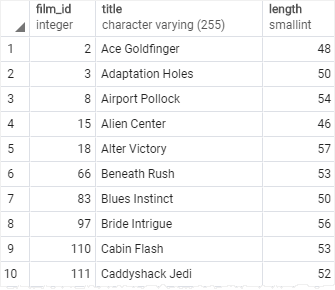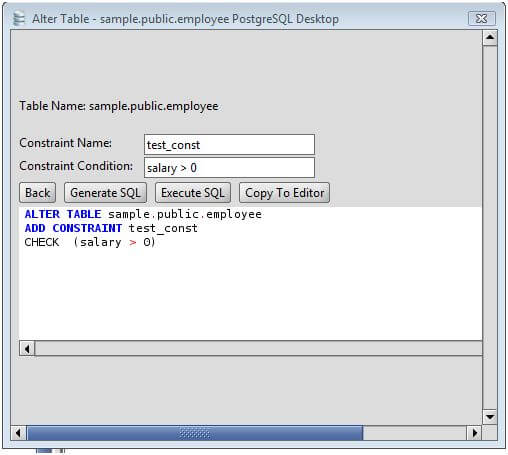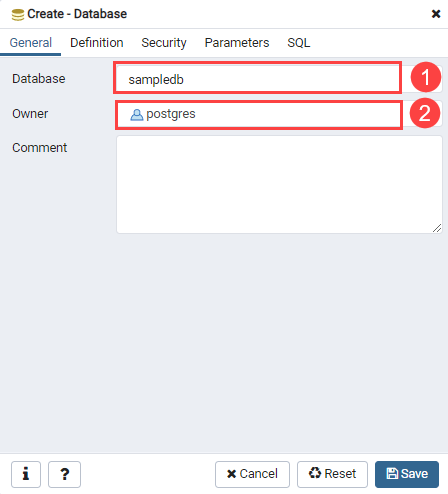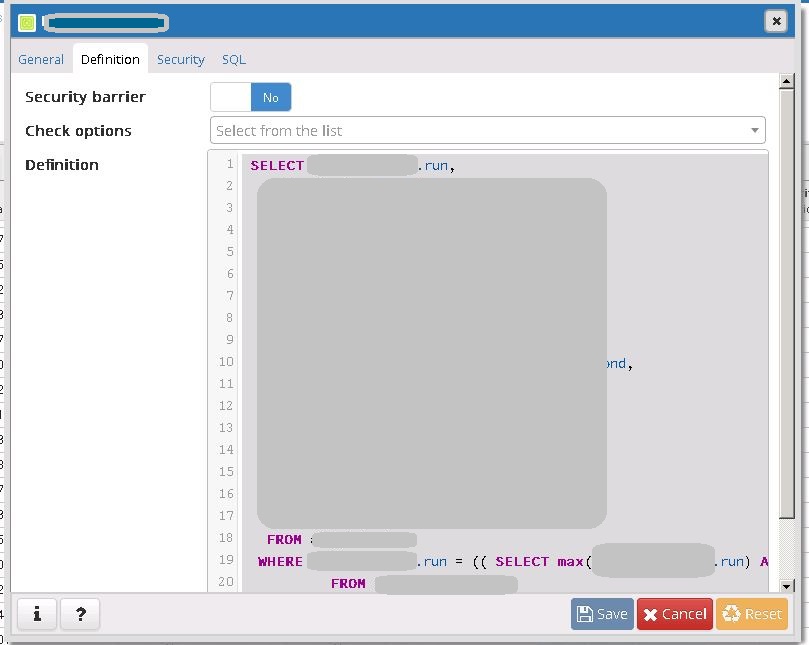

How to use the PostgreSQL CREATE TABLE AS statement 6. Creating a PostgreSQL table using dbForge Studio for PostgreSQL 4. Creating a new table from the command line 3. Note also the lack of a semicolon on set - that is not an SQL statement and it all needs to fit on one line. The table given below uses a simple SELECT statement to illustrate a basic, but complete, SQL statement and its components.Ĭhange the definition of an aggregate function. Creating a table using the PostgreSQL CREATE TABLE statement 1.1 Using the LIKE option 1.2 Creating a temporary table 2. Using PostgreSQLs dollar quoting for this seems easiest.
For the syntax of a specific command, use the following command −Īn SQL statement is comprised of tokens where each token can represent either a keyword, identifier, quoted identifier, constant, or special character symbol. ASUsing psql, you can generate a complete list of commands by using the \help command. Program Files → PostgreSQL 9.2 → SQL Shell(psql). Now that you have Postgres installed, open the psql as − This set of commands is taken from the psql command-line tool. If you value my work and want to see Slonik and many other of my Open-Source projects to be continuously improved, then please consider becoming a patron:įinally, I missed a use case scenario that you would like me to cover, mention it in the comments and I will happily include it.This chapter provides a list of the PostgreSQL SQL commands, followed by the precise syntax rules for each of these commands. (But I would just use the auto-created sequence. If you want the id column to use your sequence instead, use ALTER TABLE to change the default value for the id column.

Just use nextval () on that sequence, which would be accountsidseq by default given your table & column names. The primary intent of this article was to demonstrate that Slonik provides a safe abstraction for constructing SQL queries keeping the static parts of the query intact. 1 When you use SERIAL, a sequence is automatically created. Temporary tables are automatically dropped at the end of a session, or optionally at the end of the current transaction (see ON COMMIT below). I did not find an example for creating an object array. If specified, the table is created as a temporary table. 167 define/defined() functions creating/testing constants. For the syntax of a specific command, use the following command. Date header field, e-mails, 323 DBM files caching, storage options, 883 DBMS (Database. Using psql, you can generate a complete list of commands by using the help command.

These examples cover every common dynamic SQL building scenario and provide enough knowledge of how Slonik works to enable reader to continue journey of familiarising with other query building methods provided by Slonik. The documentation shows that arrays can be created as either text or integer. Program Files PostgreSQL 9.2 SQL Shell (psql). the resultant table would look like this. I want to make a separate customers table that has distinct customercode in ascending order and related marketcode,marketname, and zone columns. The name of this form of data in PostgreSql database system is TSVECTOR. How do I ALTER a PostgreSQL table and make a column unique 1. But it is not the last step of conversion, during adding the new image with the. In this article, we will learn how to create a table in PostgreSQL. (Note that the CONSTRAINT keyword must be omitted.) jpmc26. As you can see, these PostgreSQL tables are created. As is the case with all the other query building methods in Slonik, all expressions can be nested: you can have other boolean expressions as members of a boolean expression or even SQL expression constructed using sql tagged template literal. I have table tansactions that looks like this -. If you want to let PostgreSQL generate the index name, use ALTER TABLE tablename ADD UNIQUE (columns). WHERE clause of the query is constructed using a combination of 3 possible boolean expressions. INNER JOIN country c2 ON c2.id = c1.country_idįindCinemas is an implementation of a GraphQL resolver. booleanExpression ( booleanExpressions, ' AND ' ) return context.

Initialize Supabase to set up the configuration for developing your project locally. Const findCinemas = ( root, parameters, context ) => const whereSqlToken = sql. Working locally, generating migrations as you change your tables.


 0 kommentar(er)
0 kommentar(er)
